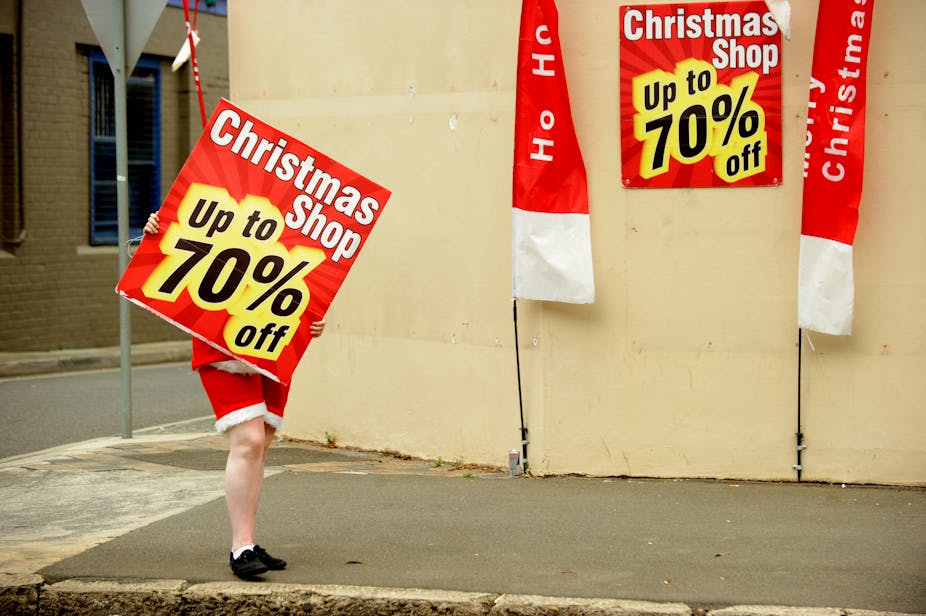The lead up to Christmas inevitably draws our attention to the actions and performance of retailers. This December there have been very few tales of cheer.
Major players such as JB Hi Fi, Billabong and Kathmandu have issued “warnings” of lower than expected sales and declining margins. Spending looks to be down across the sector (other than for groceries), and pre-Christmas “sale” signs are already appearing – a trend that kicked in a couple of summers ago during the height of the global financial crisis.
There is much talk that the traditional Boxing Day sales will involve very “deep” discounting. So where has it gone wrong for the nation’s shopkeepers? Is there any light on the horizon?
2011 has been a terrible year for the sector. Retailers have been caught in a perfect storm.
On the demand side, high levels of consumer uncertainty have seen shoppers reluctant to open their wallets. In the wake of the GFC, Aussies are finally saving, and credit card debt is on the decline.
There appears to have been a “mindset shift” among shoppers, with greater pursuit of the bargain and more comparison shopping (including online). Excess global production of many goods has had a deflationary effect, further fuelling the bargain mentality. The weather hasn’t been helpful either, with two wet summers doing little to encourage shopping.
Meanwhile, new competitors have emerged for this stagnant sales dollar: in both the “bricks” and the “clicks” domains. Prominent international retailers, particularly in the fashion clothing markets, are finally making serious entrées into Australia. The arrival of The Gap, Zara and Top Shop, and impending openings by Uniqlo and H&M, have highlighted the poor offerings of many staid, tired local brands (and also the copycat merchandising of several).
The rise of the Australian dollar, has seen many more Australians braving international online purchases, exposing the low price competitiveness of a wide variety of products on Australian shelves.
It does look like e-commerce has finally tipped over into the mainstream (it is worth remembering that Amazon is now 16 years old). The behemoths of Aussie discretionary retail – David Jones, Myer, Harvey Norman – can no longer continue to naysay, or lobby for ineffective GST impositions. All three firms launched their web portals quite successfully in 2011. Their online success points to one possible path for revitalisation.
Mixing “bricks” and “clicks” should be the focus for Australian retailers large and small. Retailers with extensive store networks do have advantages in terms of showcasing physical goods, delivering online purchases and offering collection points.
Replicating the shopping environment online extends the reach and the opening hours of such store networks. Highly specialised (and localised) retailers who also offer their wares online have the scope to broaden their appeal, overcome geographical constraints, and potentially improve their own buying power with suppliers.
Highly skilled merchandisers could leverage their “curating” capabilities in the e-commerce arena, especially through the utilisation of social media.
Operating online presents many new challenges, and some retailers won’t be up for these. Business-to-consumer delivery logistics are complex, and the service processes very different. Specialist providers of such infrastructure are emerging – including Australia Post – and smart entrepreneurs will no doubt continue to find innovative solutions and niches.
It is worth remembering that not every shopper, nor every purchase, will head online. Some consumers lack access. Some products are too experiential in nature.
Physically shopping can be a highly enjoyable and social leisure activity that bombards all the senses. Shopkeepers who entice and stimulate and bring together products and shoppers in an exciting fashion can and do still earn a living. Perhaps their Christmas tales would make for rosier headlines?

